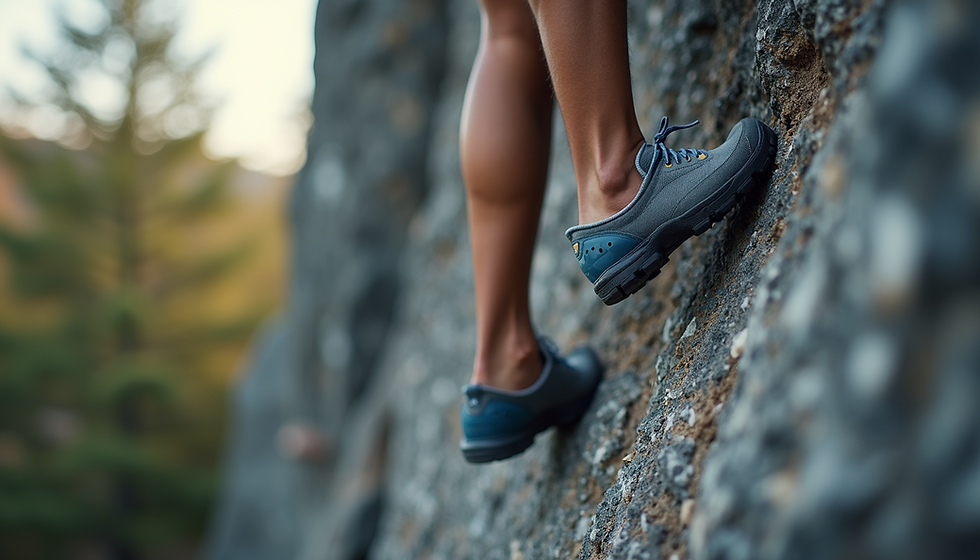How to start sea cliff climbing
- info400279
- Mar 30, 2024
- 3 min read
ow to go Sea Cliff Climbing
It’s no secret that I’m a big lover of sea cliff climbing, with North Wales having some great sea cliffs to climb on being a part of the reason I live where I do. A day climbing on them is always a slightly magical experience, there is something about the sea nipping at your heels, wind whipping around and gulls sweeping past that can’t be found anywhere else.
Descent
Unlike normal crags, where usually you can walk to the bottom and then climb to the top, sea cliffs often require slightly more complicated descent methods. This varies from cliff to cliff, but other than at a few rare venues where you climb off the beach, usually it involves at the least a down scramble and more often than not it requires abseiling down. Sea cliffs generally don’t have much in the way of protection at the top and commonly have metal stakes hammered into the ground to belay and abseil from.
Some key tips for descending;
Make sure you are in the right place before committing to going down.
Check the tide state is safe enough to climb (tide chart).
Build bombproof belays to abseil from and again at the bottom of the abseil on the route.
Communicate the plan clearly between team members.
The first abseiler is responsible for building a belay at the bottom to secure climbers to.
Make sure you take everything down that you want! Ropes, Rack etc…
Have an emergency exit plan, either an easier route or the abseil rope.
Make sure there are no access or bird nesting restrictions.

Ascent
A lot of the thinking should have already taken place by the time we are actually at the bottom of the sea cliff, ready to climb. At this point our main consideration is hopefully to concentrate on enjoying the climbing, but I’ve listed some key points to think about below.
Make sure you are on the right route.
Take care with loose rock, often the tops of sea cliffs can be poorer than the bottom.
Inspect and back up insitu gear, the sea causes fixed gear to deteriorate quickly.
Be careful handling equipment, gear dropped in the sea is hard to retrieve!
Have a communication system with your partner in case you can’t see/hear each other.
Know how to ascend a rope.
Keep an eye on the tide height and state.

Tides
Tide information can seem quite complicated and daunting at first but if we play by some simple rules as climbers we can generally avoid getting into too much trouble. Essentially there are two high tides a day and two low tides, for climbers the best time to start climbing is when the tide is dropping from a high down to low because this gives us the longest amount of time to start our route. When checking tide times it’s a good idea to cross reference two sources to catch any human errors, I like to use tidetimes.org.uk and either windguru.cz or magicseaweed.com as a backup.
Something else to consider is the sea state is how is the sea being affected by the wind and weather rather than the gravitational pull like the tides. If the wind is strong, generally this results in the sea state being wilder (think bigger waves), this is something we want to avoid, this can be done by either taking a cautious and probably sensible approach and climbing elsewhere or on bigger cliffs by not abseiling all the way down and belaying above the “splash line” where the waves are reaching.
Some key points;
Always read the tide tables and weather forecast to build a picture of what to expect.
Be cautious, quite a few climbers have been killed by the sea.
If you aren’t sure, go with someone more experienced or go on a course to learn more.
Freak waves happen, think carefully about where you build belays at the bottom of the cliff.
Again, always have an escape plan.
Unhappy with how it looks? Go somewhere else (usually the climbing wall or a cafe).
Safety
With some careful planning and a sensible approach sea cliff climbing can provide some of the finest days of cragging. Sometimes however it does all go wrong and we might need to call for help. If there is an accident that requires assistance, the method for summoning help is to call 999 and ask for the Coastguard.
Some final safety points;
If you aren’t happy with how the sea is, don’t go climbing that day.
Have an escape plan, usually this is leaving a rope in situ.
Drop a few grades on your first visit to a sea cliff.
Stay tied on whenever possible.
Have a clear communication system.
Have fun and stay safe, if you have any questions feel free to email me about them. moelwynmountaineering@gmail.com




Comments